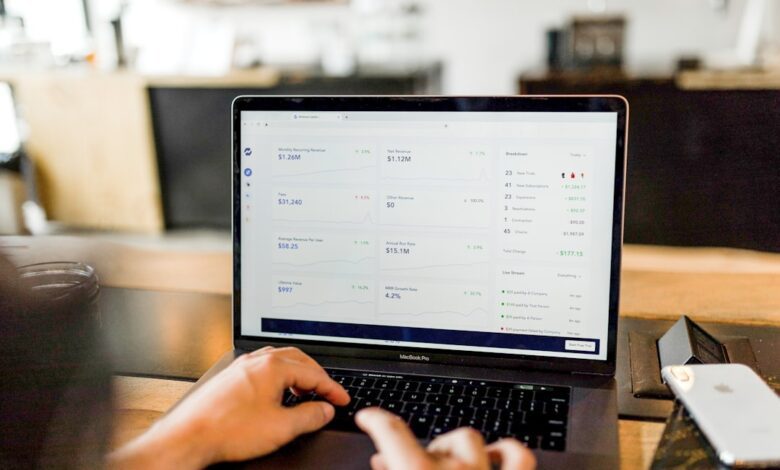Metals in Motion: Analyzing the Economic and Investment Dynamics of Silver, Copper, and Rare Earths

In today's rapidly evolving economic landscape, the role of metals—both precious and industrial—has never been more critical. As we navigate a world increasingly defined by technological advancements and sustainable practices, understanding the intricate dynamics of metal markets is essential for investors and industry stakeholders alike. This article delves into the multifaceted roles of key metals, from silver's dual function as both an industrial commodity and an investment vehicle, to the implications of copper prices as indicators of global economic health. We will explore how the surge in green energy technologies is reshaping demand for rare earth metals, and weigh the investment merits of platinum versus palladium. Additionally, we will examine the significance of metals in diversifying investment portfolios, the effects of inflation on precious and industrial metal prices, and the future of aluminum in a sustainable economy. Finally, we will consider how mining regulations impact metal pricing, providing a comprehensive overview of the factors that shape this vital sector. Join us as we uncover the complexities of metal markets and their implications for investors and industries in a changing world.
- 1. "Navigating the Metal Markets: Silver's Dual Role in Industry and Investment"
- 2. "Copper's Economic Pulse: Understanding Price Movements in a Global Context"
- 3. "Rare Earths and Renewables: The Green Energy Revolution's Demand Surge"
1. "Navigating the Metal Markets: Silver's Dual Role in Industry and Investment"
Silver has long been recognized for its unique properties that make it valuable in both industrial applications and as an investment asset. As a key component in various industries, silver plays an essential role in electronics, solar energy, and medical technologies. Its high electrical conductivity and antibacterial properties make it indispensable in producing conductive materials for electronic devices and in medical instruments. The growing demand for renewable energy technologies, particularly solar panels, has further amplified silver's industrial significance, as silver is a critical component in photovoltaic cells.
Simultaneously, silver serves as a popular investment vehicle, often viewed as a hedge against inflation and economic uncertainty. Investors are drawn to silver for its historical role as a store of value, similar to gold, but with the added benefit of being more accessible to a broader range of investors due to its lower price point. This duality creates a complex relationship between the industrial and investment markets. When industrial demand surges, it can drive up prices, attracting more investors. Conversely, during periods of economic downturns, silver's appeal as a safe-haven asset can result in increased investment demand, further elevating its market value.
Navigating the silver market requires an understanding of these interconnected dynamics. Factors such as technological advancements, shifts in industrial demand, and global economic trends collectively influence silver's price trajectory. Investors and industry stakeholders must remain vigilant in monitoring these trends to make informed decisions, balancing the metal's industrial utility with its investment appeal. As the world increasingly pivots towards sustainable practices and green technologies, silver's role is likely to evolve, creating both opportunities and challenges in the metal markets.
2. "Copper's Economic Pulse: Understanding Price Movements in a Global Context"
Copper is often referred to as a barometer for the global economy due to its widespread use in various industries, including construction, electronics, and transportation. As one of the most versatile metals, fluctuations in copper prices can provide insights into economic health and industrial activity worldwide.
When demand for copper rises, it typically indicates a growing economy, as increased construction and manufacturing activities require more of this essential metal. Conversely, a decline in copper prices may signal economic slowdowns or reduced industrial activity. For instance, during periods of global economic expansion, such as post-recession recoveries, copper prices tend to increase due to heightened demand from emerging markets, particularly in Asia.
Additionally, geopolitical factors play a significant role in copper price movements. Trade tensions, supply chain disruptions, and changes in mining regulations can all lead to price volatility. For example, when major copper-producing countries face strikes or political instability, it can create supply shortages that drive prices higher.
Furthermore, the correlation between copper prices and other economic indicators, such as construction spending and manufacturing output, reinforces its status as an economic pulse. Analysts often monitor these trends to gauge future economic conditions, making copper a vital component of investment strategies focused on industrial metals.
In summary, understanding copper's price movements within a global context is essential for recognizing broader economic trends and making informed investment decisions. As the world continues to evolve economically, copper will remain a key indicator of growth and industrial vitality.
3. "Rare Earths and Renewables: The Green Energy Revolution's Demand Surge"
The transition to green energy technologies has led to a significant surge in demand for rare earth metals, which are critical components in the production of renewable energy systems and various high-tech applications. Rare earth elements (REEs), including neodymium, dysprosium, and lanthanum, play a pivotal role in the manufacturing of magnets for wind turbines, batteries for electric vehicles, and catalysts for energy-efficient processes. As countries strive to meet ambitious carbon reduction targets, the reliance on these metals is expected to grow.
The rapid expansion of renewable energy sources, such as solar and wind, requires advanced materials that enhance efficiency and performance. For instance, neodymium-iron-boron magnets are essential for the operation of wind turbines, where their strength directly influences energy output. Similarly, lithium-ion batteries, which power electric vehicles and store energy from renewable sources, often utilize rare earth elements in their composition to improve energy density and lifespan.
In addition to traditional applications, emerging technologies such as electric vehicles and energy storage systems are propelling demand further. The global shift towards electrification and the adoption of smart grid technologies are increasing the necessity for REEs, prompting investors and industries to secure stable supplies. However, the production and extraction of rare earth metals are often concentrated in a limited number of countries, raising concerns about supply chain vulnerabilities and geopolitical risks.
As the green energy revolution continues to unfold, the market for rare earth metals is likely to experience heightened volatility, driven by fluctuating demand and regulatory changes. This dynamic landscape presents both opportunities and challenges for investors and industries alike, making it imperative to monitor developments in the rare earth sector closely. The integration of sustainable practices in mining and recycling of these metals will also play a crucial role in meeting the growing demand while minimizing environmental impacts.
In conclusion, the dynamics of the metal markets reveal a complex interplay between industrial demand and investment strategies, highlighting the multifaceted roles that various metals play in today’s economy. Silver stands out not only as a crucial component in industrial applications but also as a valuable asset for investors seeking to hedge against market volatility. Similarly, copper prices serve as a barometer for global economic health, reflecting broader trends and shifts in demand.
The increasing focus on green energy technologies underscores the critical role of rare earth metals, which are becoming indispensable in the transition to sustainable energy solutions. Meanwhile, the ongoing debate between platinum and palladium as investment options illustrates the nuanced considerations investors must weigh, including market trends, supply chain factors, and future applications.
As inflationary pressures continue to influence the prices of both precious and industrial metals, investors are recognizing the importance of diversifying their portfolios to mitigate risks associated with economic fluctuations. The future of aluminum also appears promising, especially as sustainability becomes a central theme in industrial processes.
Finally, the impact of mining regulations cannot be overlooked, as they shape the supply landscape and, consequently, metal prices in a rapidly evolving market. As we move forward, staying informed about these trends and understanding the interconnectedness of these factors will be essential for investors and industry stakeholders alike, ensuring they are well-positioned to navigate the complexities of the metal markets in the years to come.





